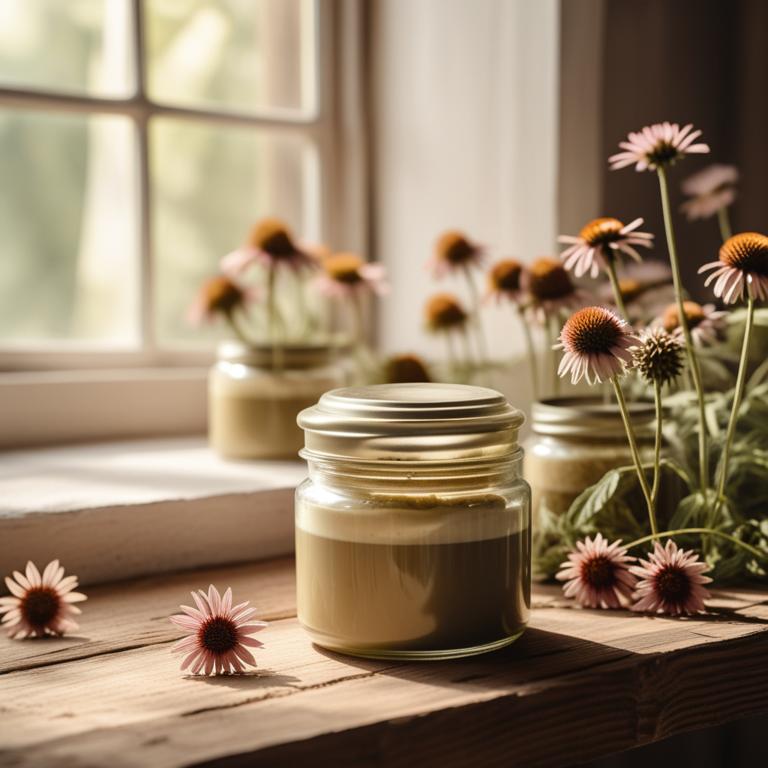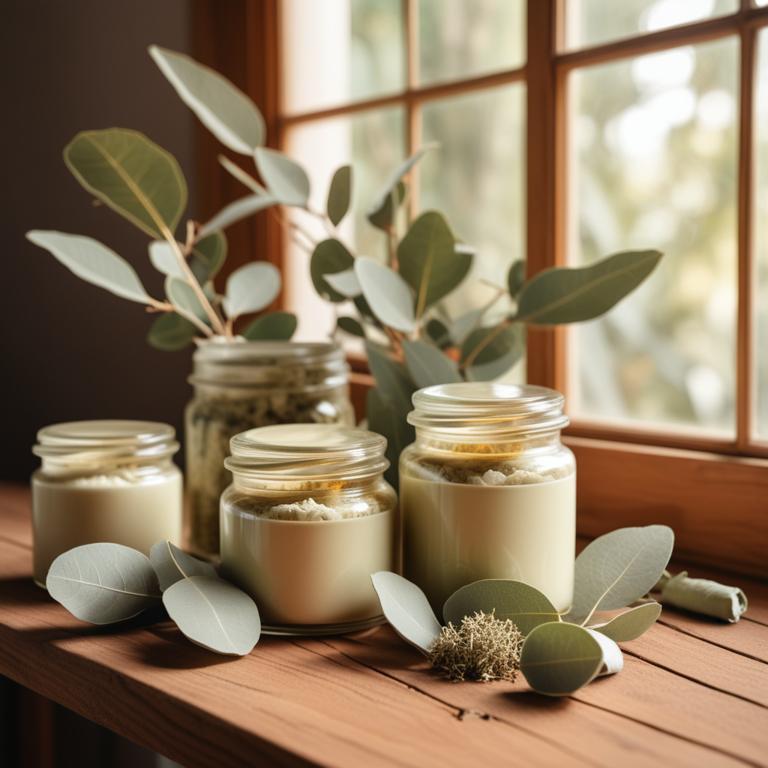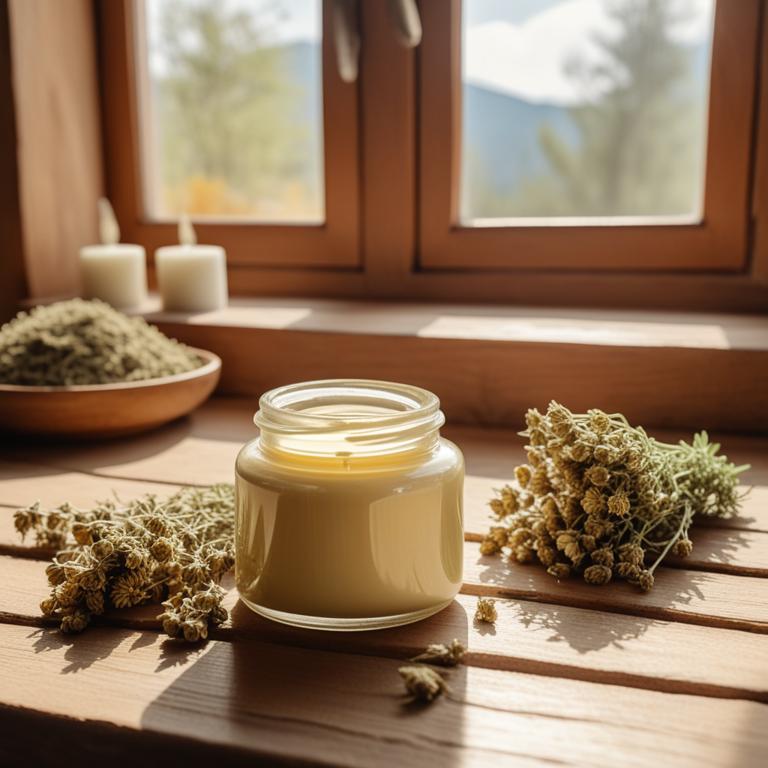7 Best Herbal Creams For Stye

Herbal creams for Stye are topical preparations made from plant extracts that are used to treat styes, which are painful, pus-filled bumps on the eyelids caused by bacterial or viral infections.
The benefits of using herbal creams to treat styes include their ability to reduce inflammation, soothe the affected area, and promote healing.
Examples of herbal creams that can be used to treat styes include tea tree oil cream, which has antibacterial properties that help combat infections, aloe vera cream, which has anti-inflammatory properties that reduce swelling and promote healing, chamomile cream, which has calming effects that soothe the affected area, and lavender oil cream, which has antiseptic properties that help prevent further infection.
By using these herbal creams, individuals can avoid the harsh chemicals found in over-the-counter treatments and promote a faster recovery from the stye ailment.
According to the study in "Drug development and industrial pharmacy", creams for stye can be formulated with Garlic oil and Eruca oil, which have excellent antimicrobial activity, to effectively treat stye with no skin irritation.
Below there's a list of the 7 best herbal creams for stye.
- 1. Calendula officinalis creams
- 2. Aloe barbadensis creams
- 3. Melaleuca alternifolia creams
- 4. Eucalyptus globulus creams
- 5. Chamomilla recutita creams
- 6. Hypericum perforatum creams
- 7. Lavandula angustifolia creams
Also you may be interested in...
TODAY'S FREE BOUNDLE
Herb Drying Checklist + Herbal Tea Shopping List + Medicinal Herbs Flashcards
Enter you best email address below to receive this bundle (3 product valued $19.95) for FREE + exclusive access to The Aphotecary Letter.
$19.95 -> $0.00
1. Calendula officinalis creams

Calendula officinalis creams are a popular herbal remedy used to treat styes, which are painful and often unsightly infections of the eyelid or eyelash.
The anti-inflammatory and antimicrobial properties of Calendula officinalis creams help to reduce swelling and prevent the spread of infection, thereby promoting healing and alleviating symptoms.
The bioactive constituents, including triterpenoids, flavonoids, and carotenoids, in Calendula officinalis creams contribute to their therapeutic effects by modulating the immune response and inhibiting the growth of bacteria and other microorganisms that cause styes.
By using Calendula officinalis creams, individuals can experience the benefits of a reduced risk of complications, faster healing times, and a decreased likelihood of recurrence, making it a valuable natural remedy for managing stye infections.
Related Study
According to "BMC veterinary research", Calendula officinalis creams for stye may be beneficial due to its antibacterial and antifungal effects, as well as its wound-healing properties.
2. Aloe barbadensis creams

Aloe barbadensis creams, derived from the aloe vera plant, have been widely used to treat stye, an inflammatory condition caused by bacterial or viral infection.
The anti-inflammatory and antimicrobial properties of aloe vera creams help to reduce redness, swelling, and pain associated with stye.
The bioactive constituents of aloe vera, such as aloin, aloe-emodin, and vitamins A, C, and E, possess potent anti-inflammatory and antimicrobial activities that contribute to the treatment of stye.
By using aloe barbadensis creams, individuals can benefit from their soothing and healing properties, which can help to speed up the recovery process and reduce the risk of complications associated with stye.
Related Study
According to "Infectious disorders drug targets", Aloe barbadensis creams for stye can be considered as a natural remedy that may aid in the treatment of skin infections and diseases at a relatively lower cost with lesser side effects.
3. Melaleuca alternifolia creams

Melaleuca alternifolia creams, derived from the leaves of the tea tree, have been traditionally used to treat stye, a bacterial infection of the eyelid or eyelash.
The antimicrobial and anti-inflammatory properties of Melaleuca alternifolia creams help to reduce the severity of the infection and promote the healing process.
The bioactive constituents, including terpinen-4-ol and cineole, exhibit potent antimicrobial activity, inhibiting the growth of Staphylococcus aureus and other bacteria responsible for stye.
By using Melaleuca alternifolia creams, individuals can benefit from a natural and effective treatment option that reduces swelling, pain, and the risk of complications associated with stye.
Related Study
According to the provided scientific study, Melaleuca alternifolia creams may have therapeutic potential against skin diseases due to the presence of bioactive compounds with no or minimal side effects, but further studies are required to confirm its effectiveness for treating stye.
4. Eucalyptus globulus creams

Eucalyptus globulus creams have been traditionally used to treat the stye ailment due to their anti-inflammatory, antibacterial, and antiviral properties.
The bioactive constituents present in these creams, such as eucalyptol and 1,8-cineole, help to reduce the inflammation and combat the underlying infection that causes the stye.
By applying the cream to the affected area, it helps to soothe the pain and discomfort associated with the stye, promoting a faster recovery and reducing the risk of complications.
The benefits of using Eucalyptus globulus creams to treat stye include reduced inflammation, accelerated healing, and a decrease in the risk of recurring infections.
5. Chamomilla recutita creams

Chamomilla recutita creams have been used to treat stye ailment due to their anti-inflammatory and antimicrobial properties, which help to soothe the affected area and prevent the spread of infection.
The herbal preparation's ability to reduce swelling and ease pain makes it an effective remedy for stye.
The bioactive constituents of Chamomilla recutita creams, including apigenin and luteolin, have been shown to possess anti-inflammatory and antioxidant properties, which contribute to their therapeutic effects.
By using Chamomilla recutita creams, individuals can benefit from a natural and non-invasive treatment option that promotes healing, reduces discomfort, and minimizes the risk of complications associated with stye.
6. Hypericum perforatum creams

Hypericum perforatum creams, derived from the herb St. John's Wort, have been traditionally used to treat stye, a painful and infectious eye condition.
The anti-inflammatory and antimicrobial properties of this herbal preparation help to reduce swelling and combat bacterial infections that cause stye.
The bioactive constituents, such as hyperforin and hypericin, found in Hypericum perforatum creams have been shown to exhibit potent antioxidant and anti-inflammatory activities that aid in the treatment of stye.
The benefits of using Hypericum perforatum creams to treat stye include reduced pain, inflammation, and risk of further infection, making it a popular natural remedy for this common eye condition.
Related Study
According to "BMC veterinary research", Hypericum perforatum creams have been shown to have antibacterial and antifungal effects, which could be beneficial in treating stye.
7. Lavandula angustifolia creams

Lavandula angustifolia creams, derived from the leaves of the lavender plant, have been used to treat the stye ailment due to their anti-inflammatory and antimicrobial properties.
These properties help to reduce swelling and prevent infection, thereby promoting the healing process.
The bioactive constituents, including linalool and linalyl acetate, present in Lavandula angustifolia creams possess antibacterial and antifungal properties that aid in the treatment of styes.
The use of Lavandula angustifolia creams to treat styes offers several benefits, including reduced pain, inflammation, and the risk of complications, making it a popular natural remedy for this common condition.